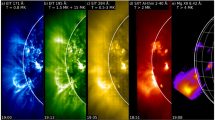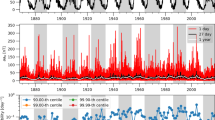Abstract
FIRST and Planck are approved ESA Astronomy missions with different objectives but with similar requirements of a highly stable thermal environment and sky viewing conditions unobstructed by Earth and Sun. A class of orbits near the second Lagrangian point L2 in the Sun-Earth system has been selected for these projects.
FIRST will investigate a region of the electro-magnetic spectrum still unexplored (85– 670 µm) i.e. the far infrared. These observations are expected to reveal very cold and distant building blocks of the universe.
Planck is a third-generation tool for the mapping of the cosmic background radiation anisotropy. The study of this “relic” radiation will allow a study of unprecedented accuracy of the universe as it was only 300,000 years after the Big Bang.
Both scientific payloads require sub-Kelvin temperatures at the limit of today’s cooling technology for space.
The two spacecraft will be launched from Kourou by a single Ariane 5 in early 2007, into a nearly equatorial and nearly parabolic orbit. This orbit can be chosen to be on the stable manifold of a large amplitude Lissajous orbit around L2. The choice of the target Lissajous orbit will depend on the launch date. FIRST will then remain on this orbit, without any further, deterministic maneuvers. Planck will perform an “amplitude reduction maneuver” onto the stable manifold of another Lissajous orbit which at the end has a maximum Sun-spacecraft-Earth angle of less than 10° as required for the Planck mission design. The scientific observations at L2 will last a minimum of three years (FIRST) and one year (Planck).
Similar content being viewed by others
References
ESA Websites: http://astro.estec.esa.n1/FIRST and http://astro.estec.esa.n1/Planck
STEINZ, J. A. “The FIRST Project,” Proceedings of ESA Symposium: The Far Infrared and Submillimetre Universe, 15–17 April 1997, ESA.SP.401, August 1997.
PILBRATT, G. “The FIRST Mission: Baseline Science Objectives and Operations,” Proceedings of ESA Symposium: The Far Infrared and Submillimetre Universe, 15–17 April 1997, ESA.SP.401, August 1997.
WHYBORN, N. D. “The HIFI Heterodyne Instrument for FIRST: Capabilities and Performance,” Proceedings of ESA Symposium: The Far Infrared and Submillimetre Universe, 15–17 April 1997, ESA.SP.401, August 1997.
POGLITSCH, A. “An Optimised Photo-Conductor Instrument for FIRST,” Proceedings of ESA Symposium: The Far Infrared and Submillimetre Universe, 15–17 April 1997, ESA.SP.401, August 1997.
GRIFFIN, M. J. “The Design of a Bolometer Instrument for FIRST,” Proceedings of ESA Symposium: The Far Infrared and Submillimetre Universe, 15–17 April 1997, ESA.SP.401, August 1997.
STEINZ, J. A. and PASSVOGEL, T. “Materials: Solutions and Avoidance of Problems; ISO and FIRST,” Proceedings of the 7th International Symposium: Materials in Space Environment, Toulouse, 16–20 June 1997, SP-393.
COLLAUDIN, B. and PASSVOGEL, T. “The FIRST-Planck Mission Cryogenic Systems— Current Status on Astronomical Telescopes and Instruments,” Proceedings of SPIE: Space Telescopes and Instruments V, 1998, p. 3556.
COLLAUDIN, B. and PASSVOGEL, T. “The FIRST and Planck ‘Carrier’ Missions-Description of the Cryogenic Systems,” Cryogenics, Vol. 39, 1999.
RODRIGUEZ-CANABAL, J. and HECHLER, M. “Orbital Aspects of the SOHO Mission Design,” AAS Paper 89-171.
FARQUHAR, R. W. “Halo Orbits and Lunar Swingby Missions of the 1990’s,” Acta Astronautica, Vol. 24, 1991, pp. 227–234.
FARQUHAR, R. W. and DUNHAM, D. W. “Use of Libration-Point Orbits for Space Observatories, in Observatories in Earth Orbit and Beyond,” Kluwer 1990, pp. 391–395.
GÓMEZ, G., JORBA, A., MASDEMONT, J., and SIMÓ, C. “Study Refinement of Semi-Analytical Halo Orbit Theory,” Final Report ESOC Contract 8625/89/D/MD(SC), Barcelona, April 1991.
BELBRUNO, E. and AMATA, G. B. “Low Energy Transfer to Mars and the Moon Using Fuzzy Boundary Theory,” Final Report of ESA Contract, ALENIA document SD-RP-AI-0202, August 1996.
HECHLER, M. “GAIA/FIRST Mission Analysis: Ariane and the Orbits around L2,” ESOC MAS WP 393, February 1997.
HECHLER, M. and COBOS, J. “FIRST Mission Analysis: Transfers to Small Lissajous Orbits Around L2,” ESOC MAS WP 398, July 1997.
HECHLER, M. and COBOS, J. “FIRST/PLANCK and GAIA Mission Analysis: Launch Windows with Eclipse Avoidance Manoeuvres,” ESOC MAS WP 402, December 1997.
COBOS, J. and HECHLER, M. “FIRST/PLANCK Mission Analysis: Transfer to Lissajous Orbit Using the Stable Manifold,” ESOC MAS WP 412, December 1998.
FELICI, F. “FIRST and Planck: Two Cryogenic ESA Missions at L2,” IAF-99-A.2.02, Amsterdam, October 1999.
HECHLER, M., COBOS, J., and BELLO-MORA, M. “Orbits Around L2 for the FIRST, Planck and GAIA Astronomy Missions,” IAF-99-A.2.02, Amsterdam, October 1999.
Author information
Authors and Affiliations
Additional information
This paper was invited by Robert Farquhar and is based mainly on references [19–20].
Rights and permissions
About this article
Cite this article
Felici, F., Hechler, M. & Vandenbussche, F. The ESA Astronomy Missions at L2: FIRST and Planck. J of Astronaut Sci 49, 185–196 (2001). https://doi.org/10.1007/BF03546343
Published:
Issue Date:
DOI: https://doi.org/10.1007/BF03546343




